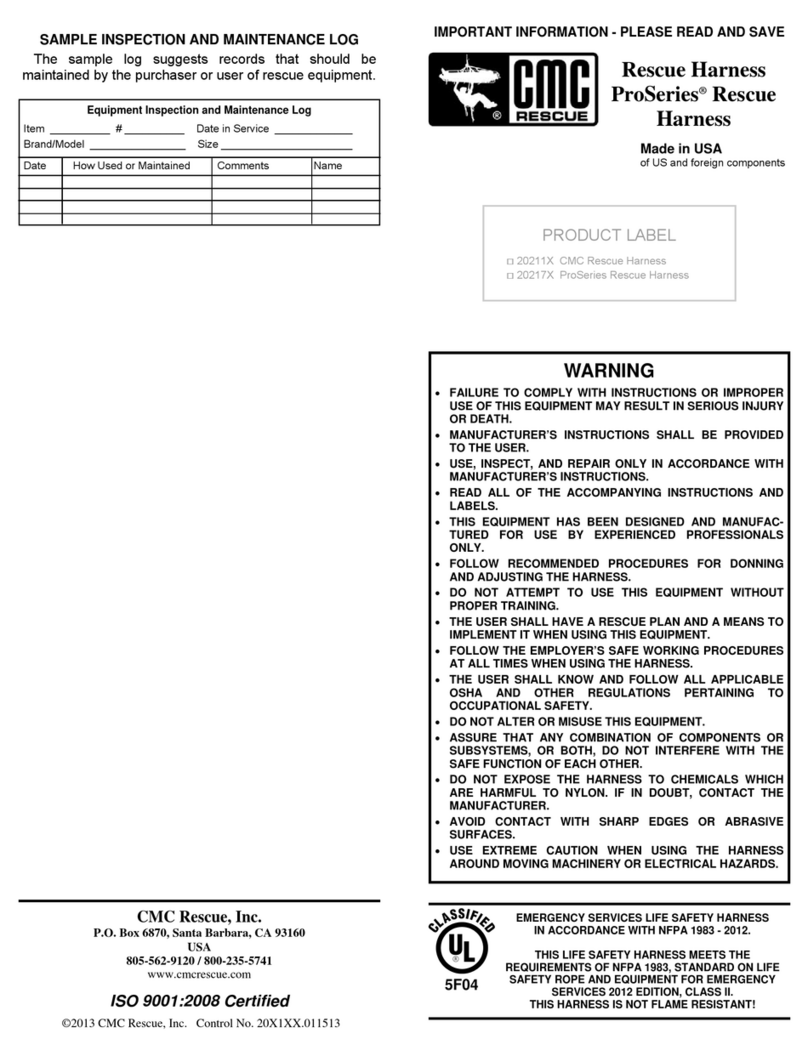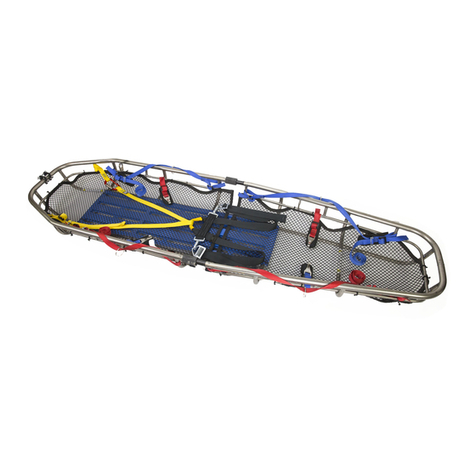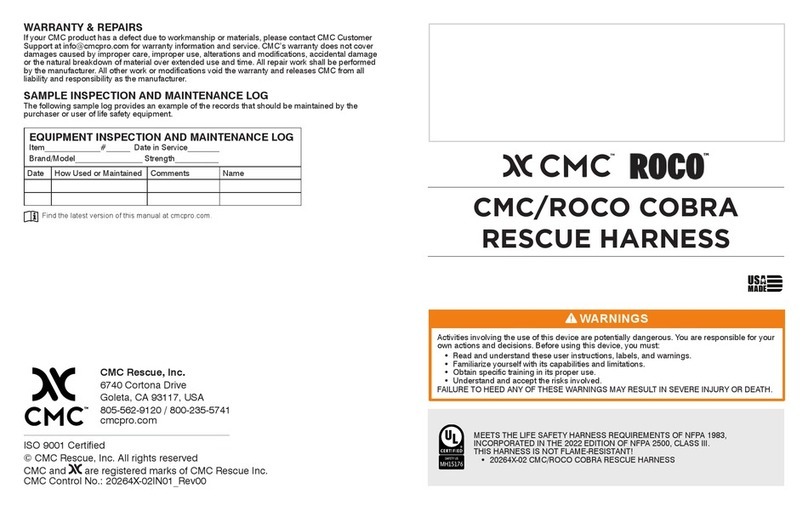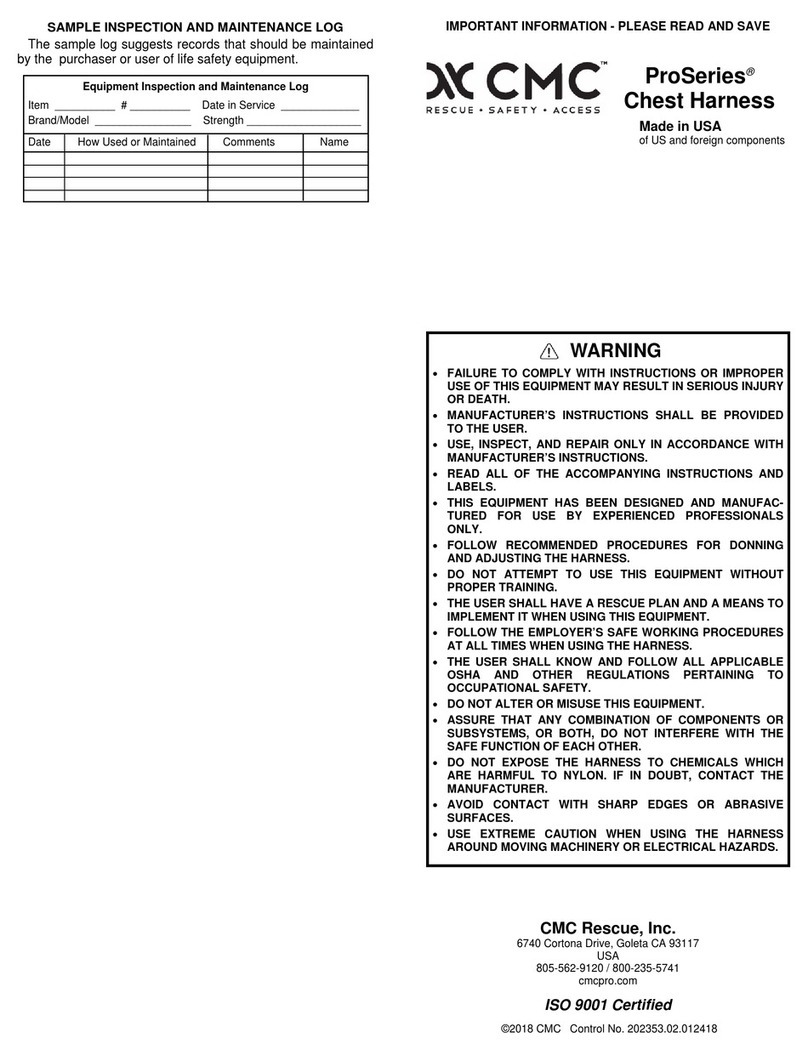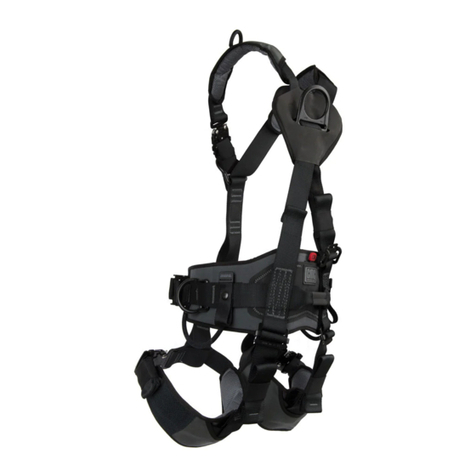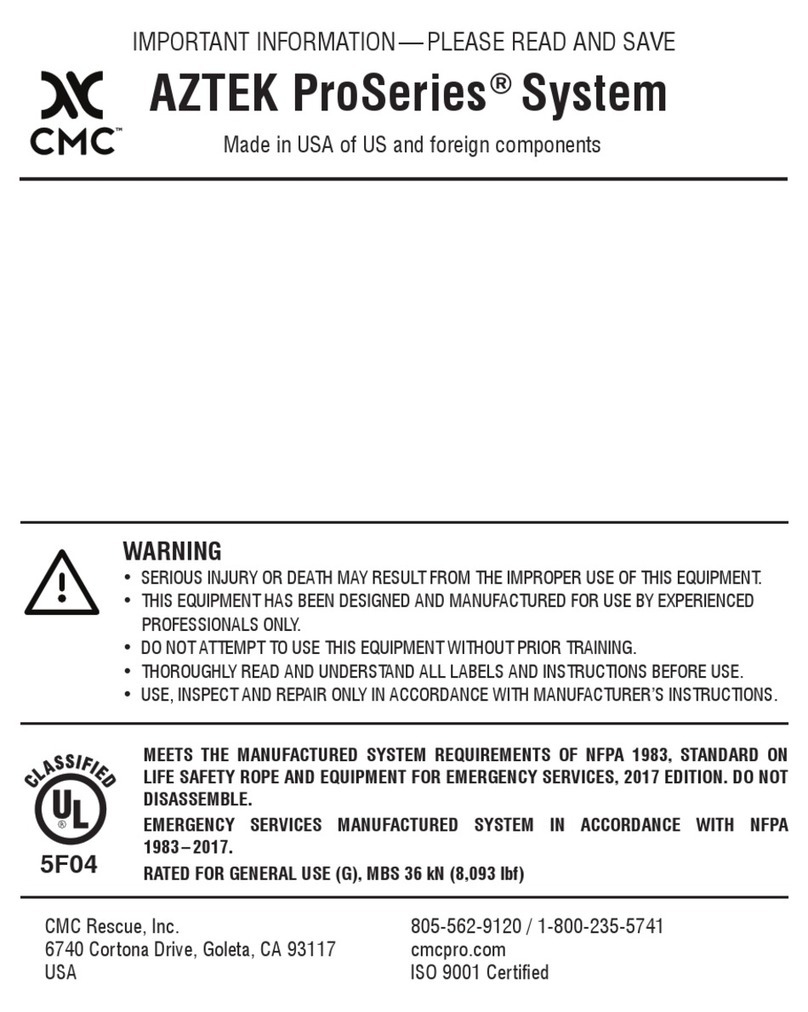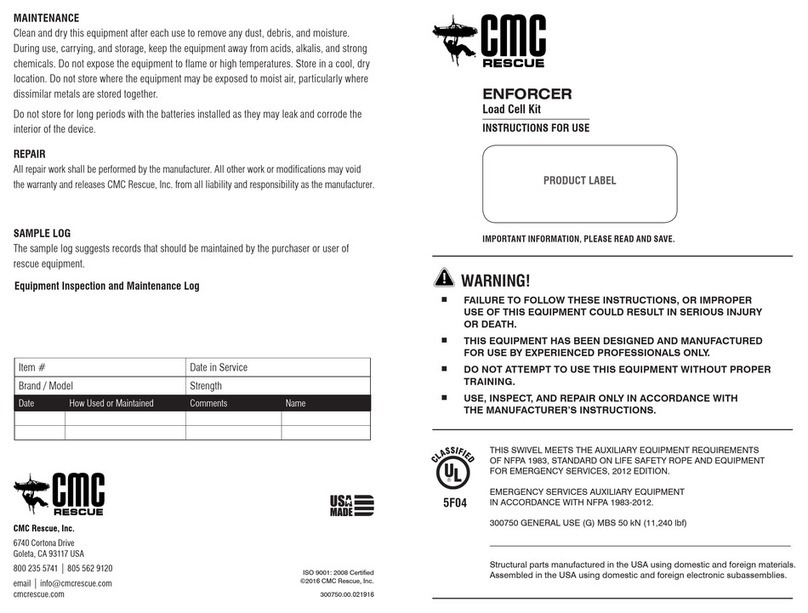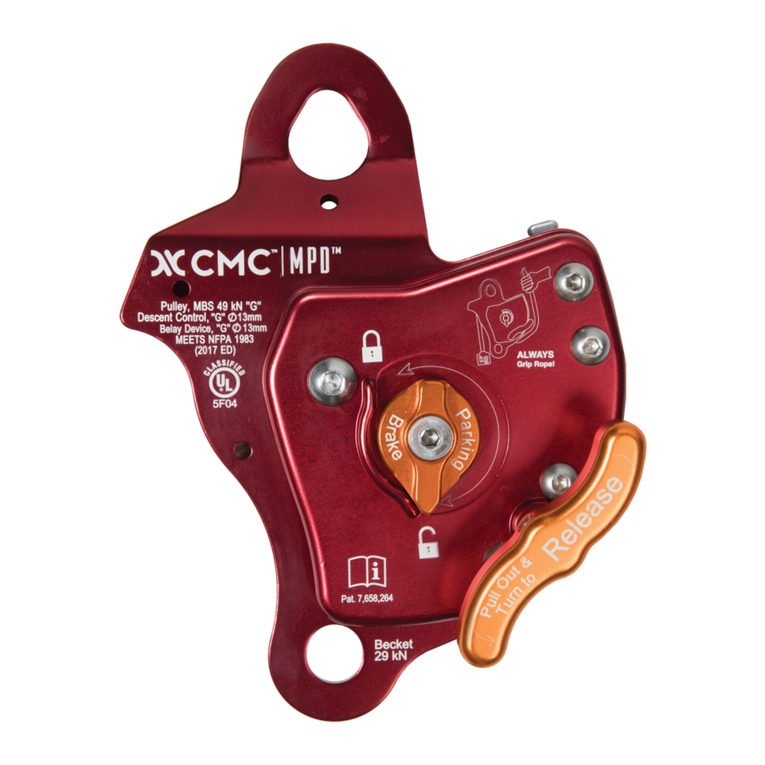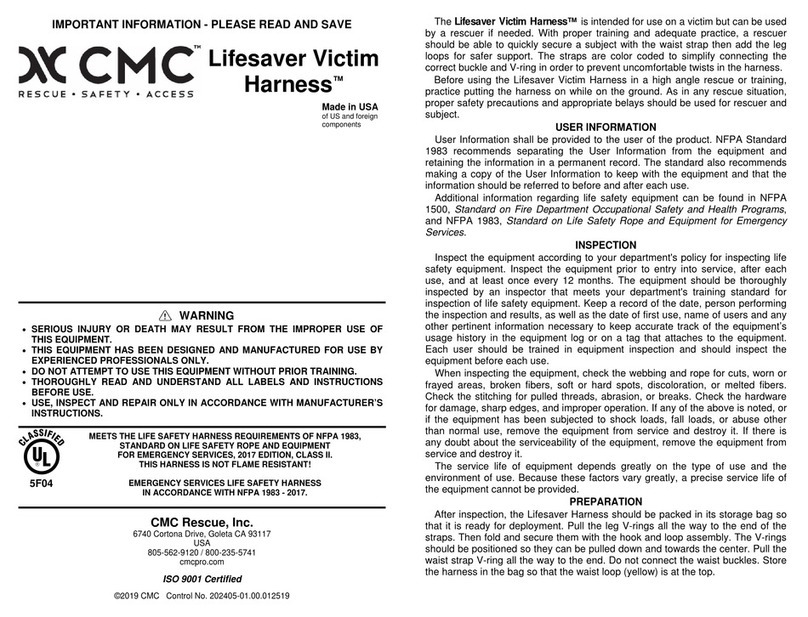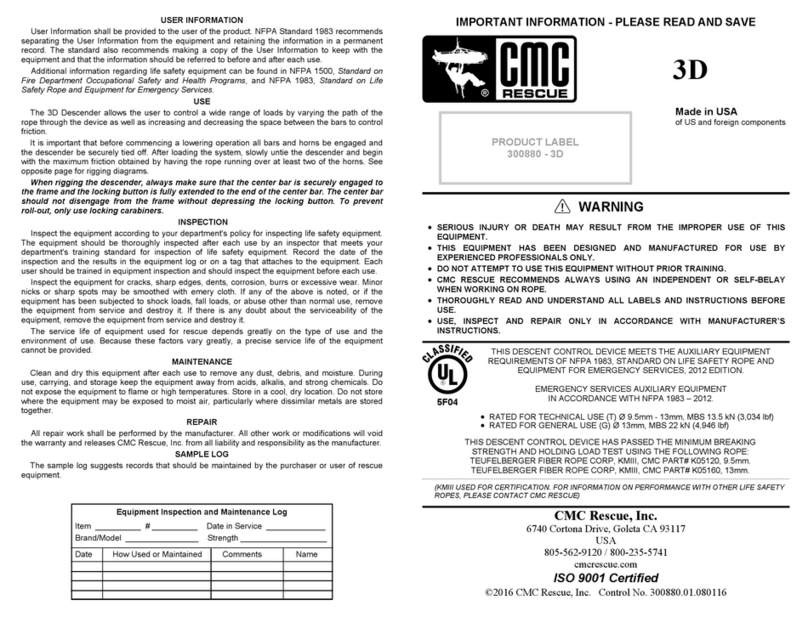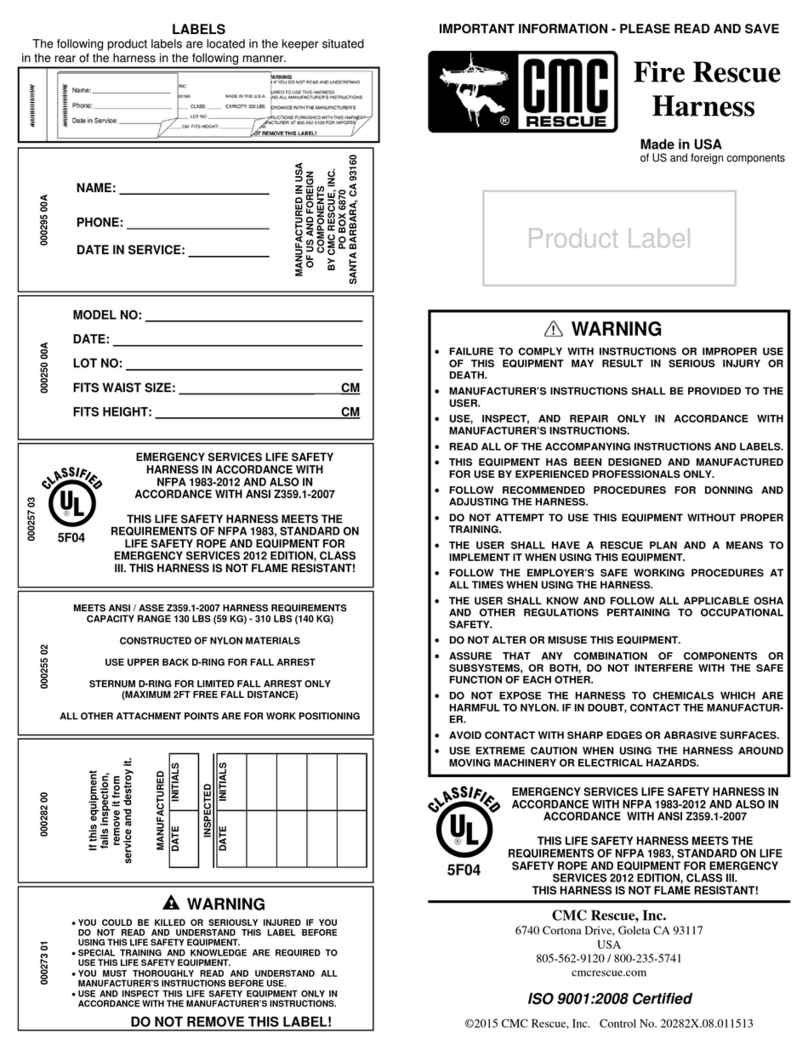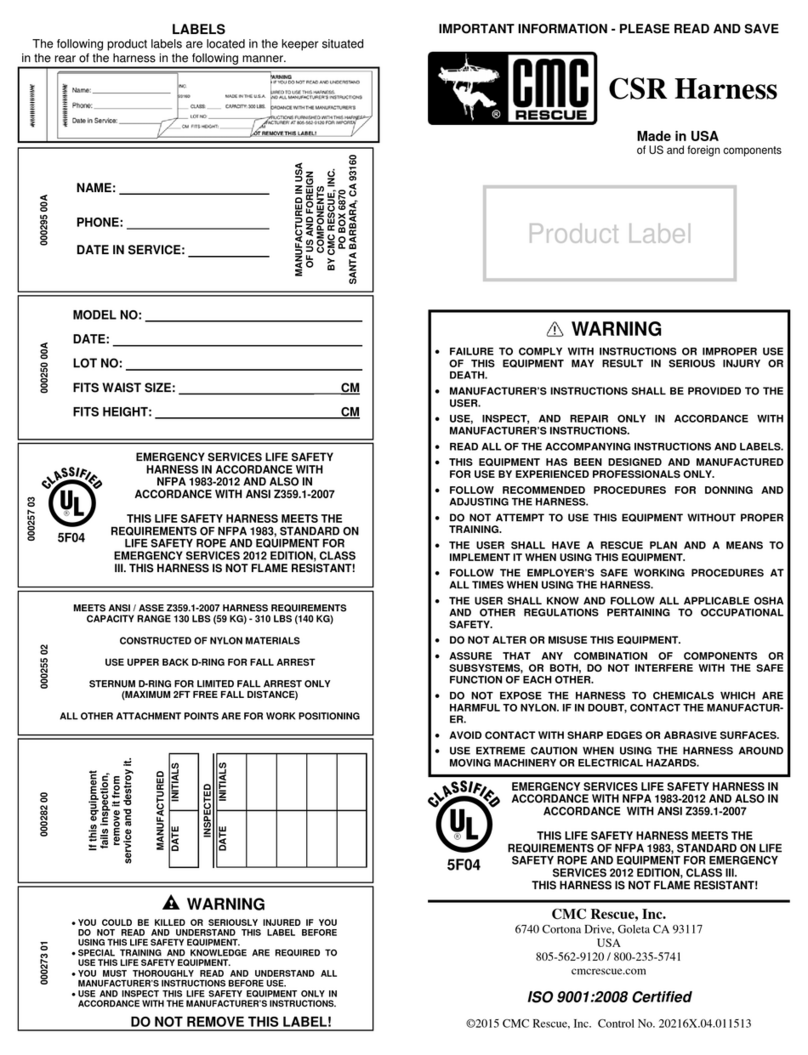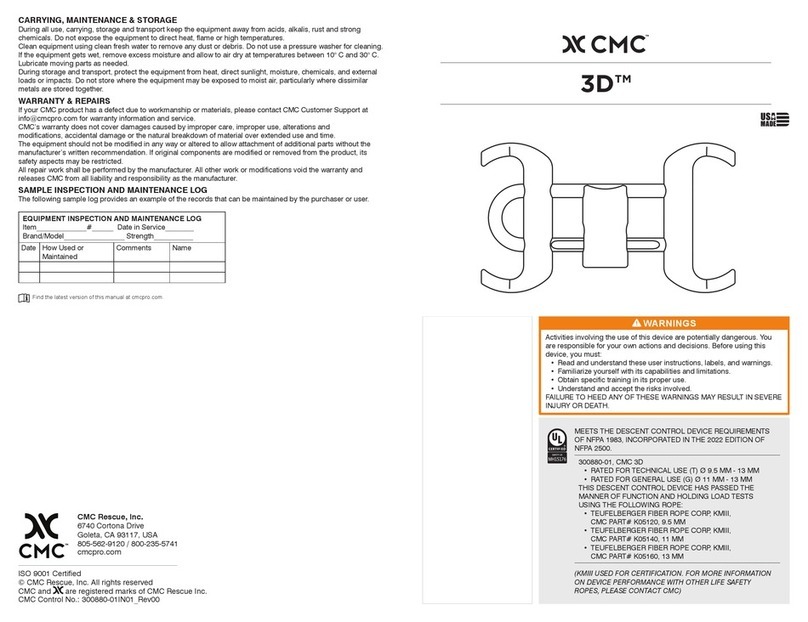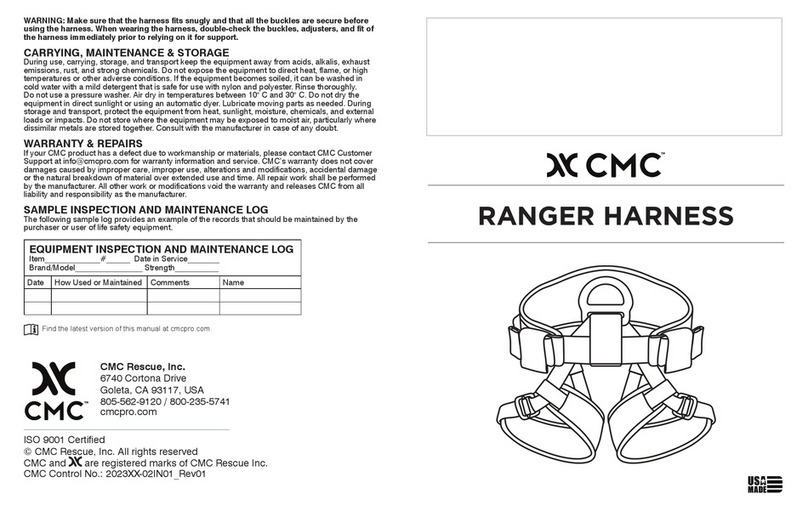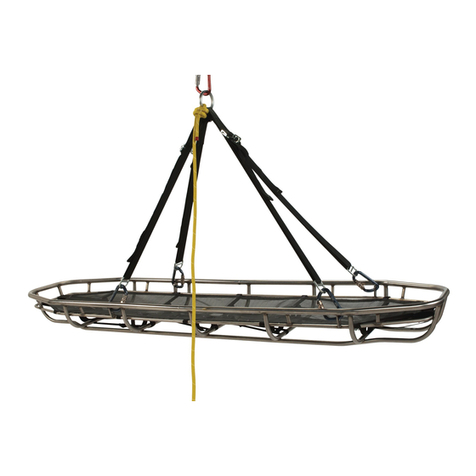
Activities involving the use of this device are potentially dangerous. You are responsible for your
own actions and decisions. Before using this device, you must:
• Read and understand these user instructions, labels, and warnings.
• Familiarize yourself with its capabilities and limitations.
• Obtain specic training in its proper use.
• Understand and accept the risks involved.
FAILURE TO HEED ANY OF THESE WARNINGS MAY RESULT IN SEVERE INJURY OR DEATH.
WARNINGS
USER INFORMATION
User Information shall be provided to the user of the product. NFPA Standard 1983, incorporated
into the 2022 edition of NFPA 2500 recommends separating the User Information from the equipment
and retaining the information in a permanent record. The standard also recommends making a copy
of the User Information to keep with the equipment and that the information should be referred to
before and after each use.
MEETS THE DESCENT CONTROL DEVICE REQUIREMENTS OF NFPA 1983,
INCORPORATED IN THE 2022 EDITION OF NFPA 2500.
300840-01, CMC RESCUE 8 (ALUMINUM)
• TECHNICAL USE (T) Ø 9.5MM - 13MM
• GENERAL USE (G) Ø 13MM
THIS DESCENT CONTROL DEVICE HAS PASSED THE MANNER OF FUNCTION
AND HOLDING TESTS USING THE FOLLOWING ROPE:
TEUFELBERGER FIBER ROPE CORP, KMIII, CMC PART# K05120, 9.5MM AND
CMC PART# K05160, 13MM
300850-01, CMC RESCUE 8 (STEEL)
• TECHNICAL USE (T) Ø 9.5MM - 13MM
• GENERAL USE (G) Ø 13MM
THIS DESCENT CONTROL DEVICE HAS PASSED THE MANNER OF FUNCTION
AND HOLDING TESTS USING THE FOLLOWING ROPE:
TEUFELBERGER FIBER ROPE CORP, KMIII, CMC PART# K05120, 9.5MM AND
CMC PART# K05160, 13MM
300845-01, CMC RAPPEL 8
• TECHNICAL USE (T), Ø 9.5MM - 11MM
THIS DESCENT CONTROL DEVICE HAS PASSED THE MANNER OF FUNCTION
AND HOLDING TESTS USING THE FOLLOWING ROPE:
TEUFELBERGER FIBER ROPE CORP, KMIII, CMC PART# K05120, 9.5MM AND
CMC PART# K05140, 11MM
300875-01, CMC SURVIVOR 8
• ESCAPE USE (E), Ø 8.5MM
THIS DESCENT CONTROL DEVICE HAS PASSED THE MANNER OF FUNCTION
AND HOLDING TESTS USING THE FOLLOWING ROPE:
CMC RESCUE, INC., PROSERIES ESCAPE LINE, CMC PART# 292017, 8.5MM
(KMIII AND PROSERIES ESCAPE LINE USED FOR CERTIFICATION. FOR
INFORMATION ON DEVICE PERFORMANCE WITH OTHER LIFE SAFETY ROPES,
PLEASE CONTACT CMC)
Additional information regarding life safety equipment can be found in NFPA 1500 and NFPA 1858
and NFPA 1983, incorporated in the 2022 edition of NFPA 2500.
LIFESPAN / INSPECTION / RETIREMENT
CMC does not specify an expiration date for hardware because the service life depends greatly on
how and where it is used. The type of use, intensity of use, and environment of use are all factors in
determining serviceability of the equipment. A single exceptional event can be cause for retirement
after only one use, such as exposure to sharp edges, extreme temperatures, chemicals, or harsh
environments. Remove retired equipment from service and destroy it to prevent further use.
A device must be retired when:
• It fails to pass inspection.
• It fails to function properly.
• It has illegible product markings.
• It shows signs of damage or excessive wear.
• It has been subjected to shock loads, falls, or abnormal use.
• It has been exposed to harsh chemical reagents.
• It has an unknown usage history.
• You have any doubt as to its condition or reliability.
• When it becomes obsolete due to changes in legislation, standards, technique or incompatibility
with other equipment.
Inspect the equipment according to your department’s policy for inspecting life safety equipment.
CMC recommends a detailed inspection by a competent person at least once every 12 months
depending on current regulations and conditions of use. Record the date, inspector name, and
inspection results in the equipment log as well as any other relevant information to track the
usage history.
Before each use, the user should:
• Conrm the device is functioning properly.
• Verify the presence and legibility of the product markings.
• Verify there is no excessive wear or indications of damage such as deformation, corrosion,
sharp edges, cracks, or burrs. Minor nicks or sharp spots may be smoothed with emery cloth.
• Check for the presence of dirt or foreign objects that can affect or prevent normal operation
such as grit, sand, rocks, and debris.
During each use, the user should:
• Conrm all pieces of equipment are correctly positioned with respect to each other.
• Monitor the condition of the device and its connections to other equipment in the system.
• Do not allow anything to interfere with the operation of the device or its components.
• Keep foreign objects out of the device.
LIMITATIONS AND PROPER USE
All Figure 8 Descenders are designed to specic performance criteria. Be aware of load limitations,
manner used, and proper technique. Do not overload a Figure 8 Descender. If you are not sure of
proper application or technique, seek proper training. See below for additional product-specic
guidance.
• Monitor for wear. Dirty ropes can be very abrasive and quickly wear out a descender.
• Tying off can be completed using the side ears. Always use a backup.
• Do not rappel off the end of your rope. Use a stopper knot on the rope end to prevent this.
• Do not lose control of your rappel. Always grip and maintain control of the free end of the rope.
• Be aware that friction devices can get hot on long rappels and lowers, especially small devices.
• When using Prusik as a backup, make sure it will catch on the rope and prevent a fall. Do not
inadvertently pull down the Prusik.
• Have a rescue plan in place to deal with any emergencies that could arise during use of the
device. Be able to free yourself if you get stuck during the rappel.
• Must be free to align with the load, any restraint is dangerous. Do not allow any bending force
on the device or it may break or break the connectors. Keep equipment properly positioned to
avoid inward forces on carabiner gates.
